
09.05.2022
Curator Gisselle Girón opens her family archive and follows her grandmother’s dance steps to reflect on the desires that move us: belonging, enchantment and mourning make our bodies move, we dance to their rhythm.
In December 2021, an infected root canal collided with an infected tooth extraction triggering infinite pain when I opened my jaw. In an eagerness to tell all the stories of the past two years that I have been away from home, I stumbled upon the opportunity to listen rather than recount events. My grandmother had been home for some months, seeking recovery from the effects on her legs that years of standing in her grocery store have had on her walking. Migrating from Cusco to Lima in the sixties, my grandmother discovered that the best way to make friends in new and unknown coordinates was through dance. In the mornings, she would weave clothes for her clients in the district of Miraflores and at night she would gather her neighbors in Surquillo to eat cuy chactado and dance to La Sonora Matancera. My grandmother is a self-declared hedonist who acknowledges that in her youthful nights there was not enough liquor or hours of dancing that could quench her thirst for connecting with new people.
While remembering those afternoons before the party, we listened to a compilation record of Cuban guaracha. My grandmother told me that for her, the party hid a great desire, the desire to belong to Lima. This city, as an emotional and geographical territory, has usually been difficult for my grandmother to think of as her own. Contrary to my grandfather, who always commented that living in Lima was his dream since he was a child, my grandmother always complained of missing her sisters, her nieces, her relatives in Cusco. At parties she usually tried to recreate the space of her mother’s picantería (a type of regional restaurant in Cusco), where the meetings of the neighborhood’s patron saint festivities took place. In memories of these parties and guaracha dances, my grandmother thinks that this longed-for community of migrants in Lima only existed at the mercy of a perennial reminder that life in the land where one comes from is much happier. This nostalgia, however, was bathed in contradictions and regret, which for my grandmother—as the eldest of twelve siblings—was combined with a poisonous notion of guilt that women should take on the entire burden of domestic labor and care. When her siblings called her and demanded her return, the biggest complaint was that the house was neglected, the children went to school without eating, and the house was dirty. I asked her if she felt that taking care of the house was her obligation, and she said yes, but now her new home, husband, and daughter (my mother) were demanding of her. But at neither of the coordinates, Lima or Cusco, had she been asked where she really wanted to live. She told me she wanted to live in dance, in a moment where her legs still responded, when she would dress up like Celia Cruz, go downstairs and greet her guests with a beer, and then dance guaracha, son and guaguancó.
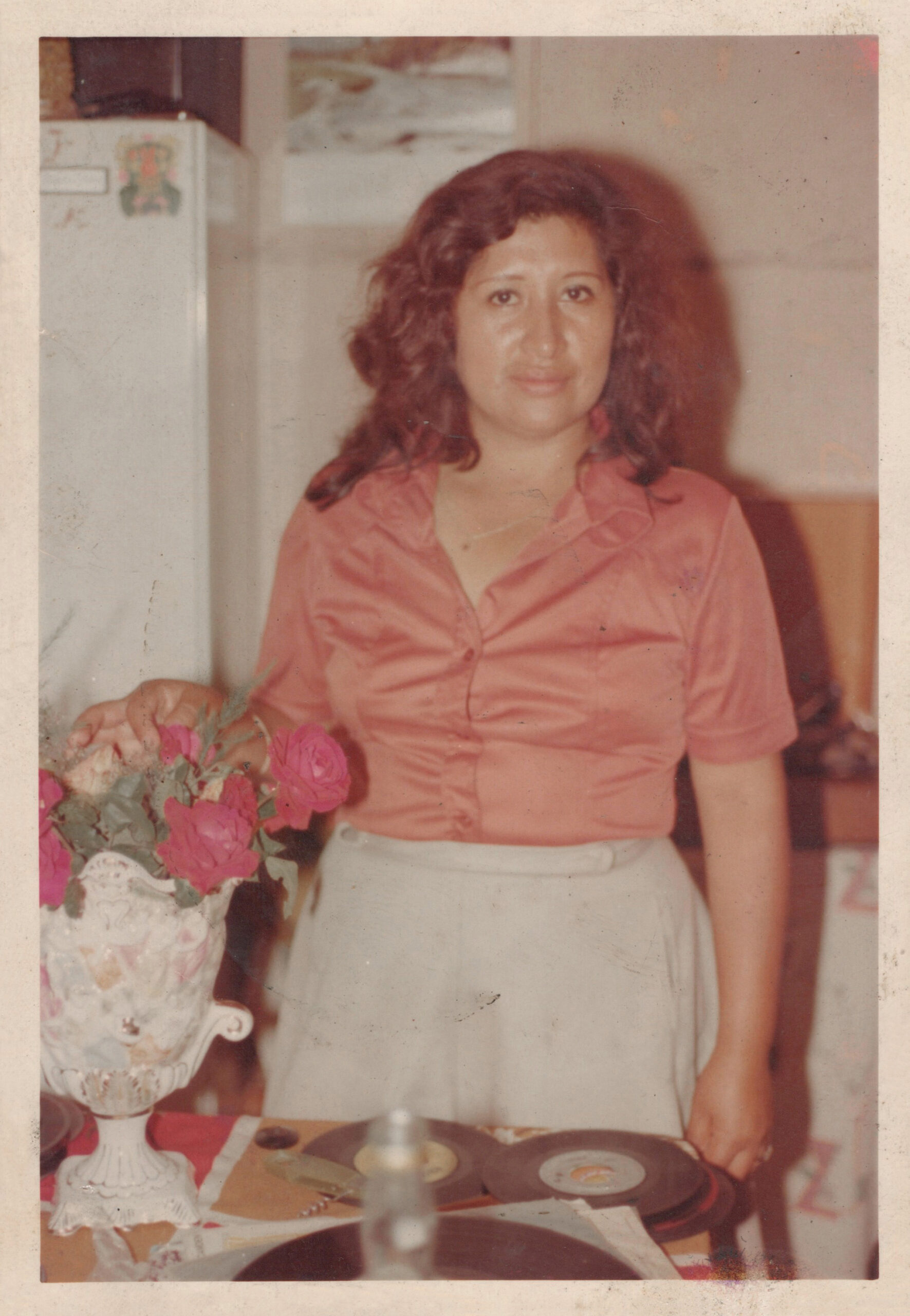
2. Keep on dancing
Dancing in the midst of a pandemic has been carried out under the shelter of four walls or in the silence behind a gate. Likewise, several clandestine parties in the early quarantine period were proof that there was a need for group dancing. Those first lawful parties during the various processes of gradual coexistence with the virus felt like a release, a recognition of other like-minded people who sought to see each other, the need to understand each other as a community. Dance as a context of exchange of affection and community recognition of affection through sound and movement is fundamental, and I have been thinking about it abstractly as a theory for a long time. Although I enjoy dancing and it is a fundamental ritual of companionship and friendship, it has only been in my most recent life that I have felt the urge to dance, to shake a leg and shake my ass. A few days ago, taking a break from the toothache and binge-watching María la del Barrio with my grandmother, I visited Joan’s workshop. One image in particular has become fused in my memory, and memories of parties in Surquillo have merged with memories of Joan’s family parties. Jarana Covid is a conjecture based on family memories in the neighborhood of Comas, where Joan grew up and where he witnessed his aunts, uncles, mother, father, grandfather in a perennial party. While he explains that his home at the Festini bus stop on Túpac Amaru Avenue was the epicenter of neighborhood parties, he shows me a photo album where he points out: “I don’t have any photo where my relatives are not drinking, eating, or dancing. Always celebrating. Look at my aunts, they look like Motown,” alluding to the fashion popularized by the artists of the American record label dedicated to promoting the integration of African-American music into the popular sounds of the sixties and seventies. And indeed, the painting had such a sound that you can listen to different musical genres at the same time: aalsa, reggaeton, festejo, and marinera. All the people in the scene—and I say “scene” because it has such movement that it resembles a recording—are wearing protective masks. Although the composition resembles the one constructed by Camilo Blas in Marinera con Cajón (1938), this adaptation carries with it the impromptu impact on fashion left by the pandemic, as well as the leading role of the Afro-Peruvian community. Unlike Camilo’s work, where he is painted in the upper corner as an observer and creator who follows us with his gaze (very much in the Renaissance style), Joan is painted in the lower corner of the painting, sitting down with a beer, admiring the dance peacefully.
Reviewing the appearances of Camilo’s painting in books, I found Eduardo Mazzini’s book, En nombre de Dios comienzo: meditaciones sobre la música criolla [In the Name of God I Begin: Meditations on Creole Music] (2010), where Marinera con Cajón is the cover image of that publication. The book highlights the great ethnic diversity of sounds in Creole music (not only Hispanic heritage, but also African and Arab-Islamic), but in particular it caught my attention to hear a little more about the history and dynamics of the “jarana,” currently understood as a Creole party but formerly exclusively used in reference to a party dedicated to singing, without dancing. The marinera limeña is structurally understood as three marineras, a resbalosa, and a fuga, but as Eduardo comments, in the jaranas the resbalosa was only performed if “el ánimo está a punto” (the mood is right). Usually the resbalosa is danced with a handkerchief in the right hand and is followed by the zapateo (shoe tapping). In performing arts theory there are notions of progression between the word, the song, and the dance, in a gradual scale in which, when the feeling becomes more and more difficult, complex, or rich to explain, it escalates until it ends in dance.
Even though the art historian in me wanted to think about Blas, I couldn’t stop thinking about Marvin Gaye, who used the incredible piece by Ernie Barnes, “The Sugar Shack” (1971), for his album I Want You (1976). The elongated bodies of the dancers and the contour of their steps, those faces of total pleasure in tune with the instruments, is simply total euphoria. I think of Jarana Covid as this pinnacle moment of feeling and desire.
Seeing this work in relation to the previous route, where my grandmother tells me about the communal role of parties, I wonder about the familiar structure in which desires are constructed:
Is this about us inheriting desires? Do we construct them in relation, in response, in opposition to family desires?
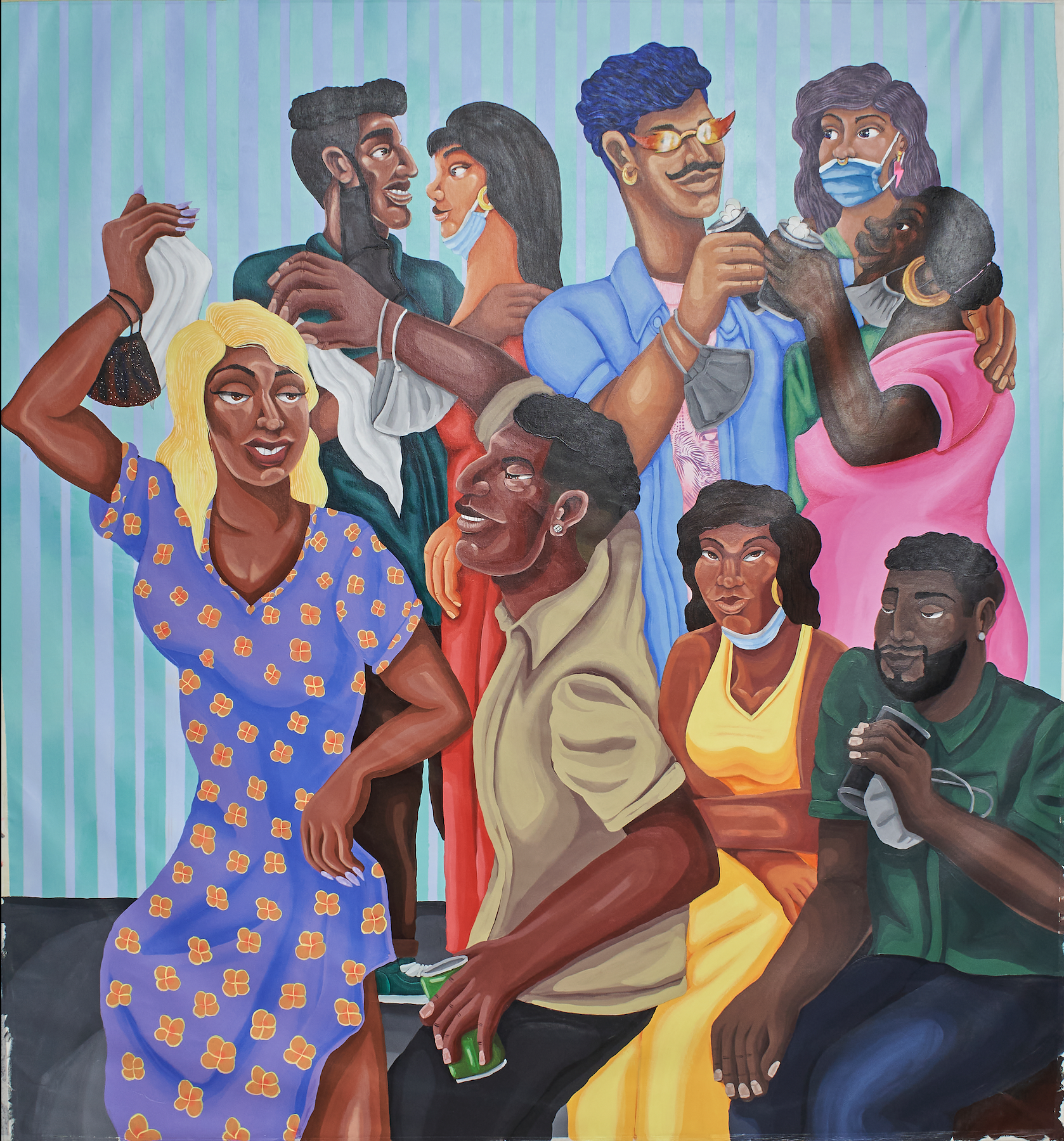
When I am commissioned to write a text, I usually consider four phases in a traditionally academic writing sequence: approach, research, writing, and revision. Each phase precedes and somewhat validates the next. In this justified interweaving of written composition, I am sure what I write will be understood, read, and disseminated as such. These conventions in the writing process in one way or another are sustained under the premise that there are only certain ways of writing, and in order for a text to be understood one must adapt to certain writing conventions. It is usually in this way that I also face the analysis of an artistic work; I have been disciplined by the academy to structure my thoughts and the way in which I communicate them in written form. But like everything in life, the rule does not exist without the exception, and it’s among exceptions that I have been writing since an episode last November 2021. I had been preparing the exhibition Ai Miz Yu, which presented fragments of installations by Marisabel Arias, Ingrid Pumayalla, and Sofia Salazar. Given the context of the pandemic and the difficulty of traveling, I formulated the exhibition without the physical presence of the objects to be presented in it. Except for some parts of Ingrid’s work, I had had no physical relationship with the things of interest. In fact, I wrote the text very much in a crystal ball fashion, relying always on the intuition that digital images of the works could give me through my screen and the conversations I could have with the artists. I never imagined that part of the piece nike, neki, nekii, niikee, naik, naiik, naki. (i love u but love issues) would detonate a fissure in the way I think, work, and approach jobs.
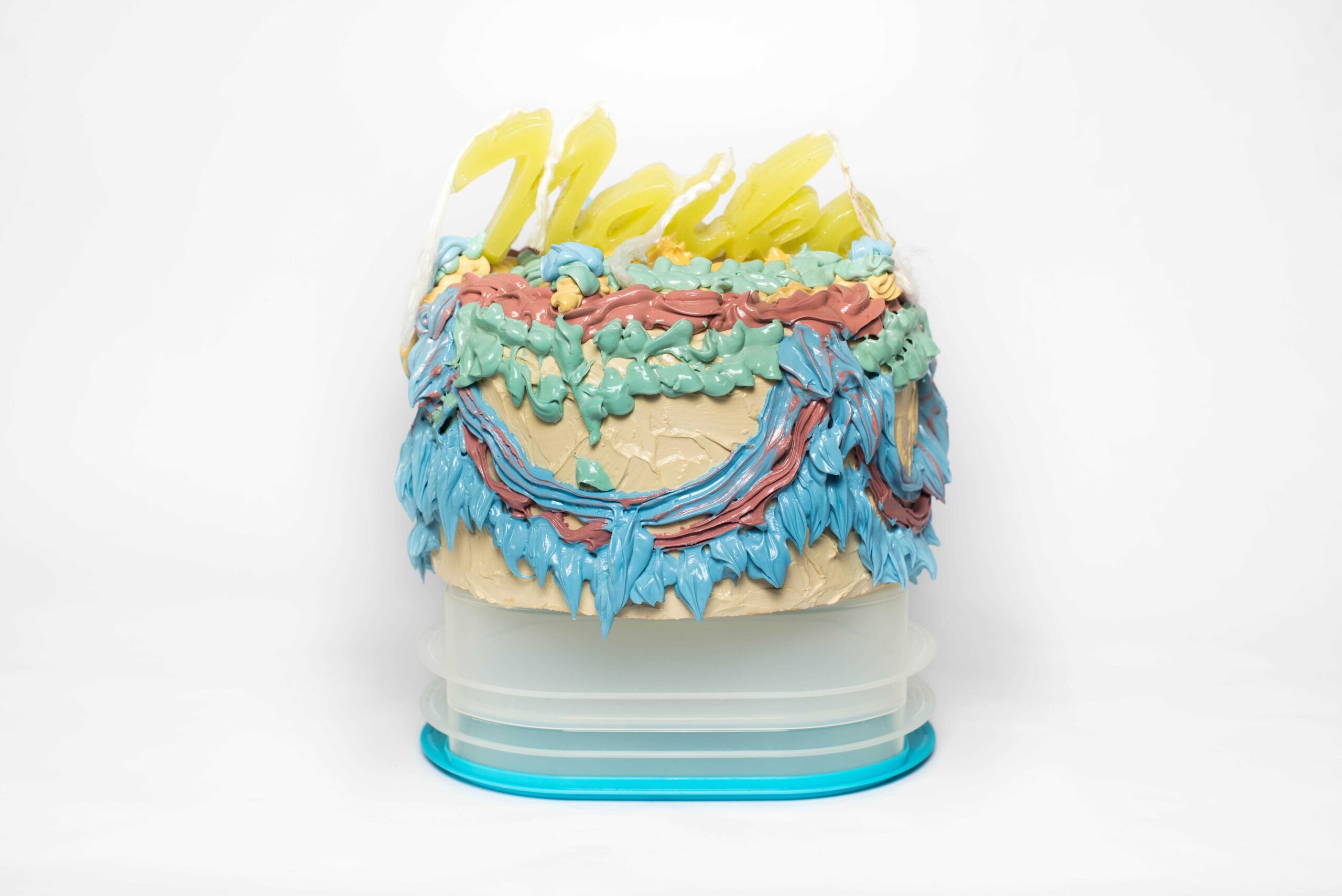
I have been thinking about desire for some time now, particularly trying to identify or research the “desires” that various works talk about, in some way mapping where they emerge from, and how they develop and impact lives. But I rarely took the leap to think about my own desire, about this thing that would or would not guide my decisions. Days before installing the exhibition, I see Marisabel after a while and she has left the cakes that are part of her installation on the dining table in the Airbnb we would share for the next few days. As I enter I feel there is someone else in the room, I think maybe Marisabel has invited the owner of the Airbnb or maybe someone else. But I find that she is the only one sitting in the dining room, waiting for me with a pizza. But after I sit down, I realize that we are not alone; the cakes are also with us. It was very strange and I felt at fault for not talking to them, like I was ignoring them by just talking to her. I almost had the urge to ask Marisabel to put them back in their little box, where they came protected from Switzerland. But I gave them a chance and started to look at them more closely, talking to Marisabel as a medium to communicate with them. First I realize that they are delicious, they look bright, they are shining, and I am moth and they are light. Then, I notice they are not one, they are three, and each one has a very different personality and tone of being.
Marisabel does not know this but I could not sleep after meeting the cakes. I felt a bit overwhelmed by their presence and with a sort of incomplete homework, as I had written about them but without seeing them—how disrespectful. That day I got up early to write on my to-do list: “and what do you wish for, gisselle?” Previously, Marisabel had told me about the presence of the cakes and, above all, how much of her and her own desires were invoked in the process of manufacturing the cakes, such as the candles and the choice of plastic containers that function as their pedestals. At the time, those conversations about the work triggered my understanding of them in the following way:
It consists of the installation of seven objects, each taking the form of a birthday cake made of acrylic resin, supported by a Tupperware-type plastic container and holding a candle on top with the phrase “Naik or Never.” The candle’s phrase and the title of the installation allude to the piracy markets of Lima and the way language is transformed and altered through the word. “Naik” is the phonetic word for the corporation Nike, Inc. Marisabel’s phrase “Naik or never” arises from the colloquial expression “now or never.” It has replaced the now with the naik, thus becoming a reflection on the present: a present that has been forever imprinted by the phrases and commercial objects surrounding us. While the choice of a cake arises from the development of the phrase in the form of a candle, the artists explain, the cake also symbolizes the derogatory slang word used in Latin America and Spain to refer to lesbian women. The result is an intense contradiction in which informal popular economies move. They are vitalistic because they manage to thrive under the lack of legal support, in this case extracting the recognizable character of the Nike brand while not being part of the corporation. But they are also often communities that reproduce homophobic discourses within family businesses, as they see it as a threat to their reproduction.
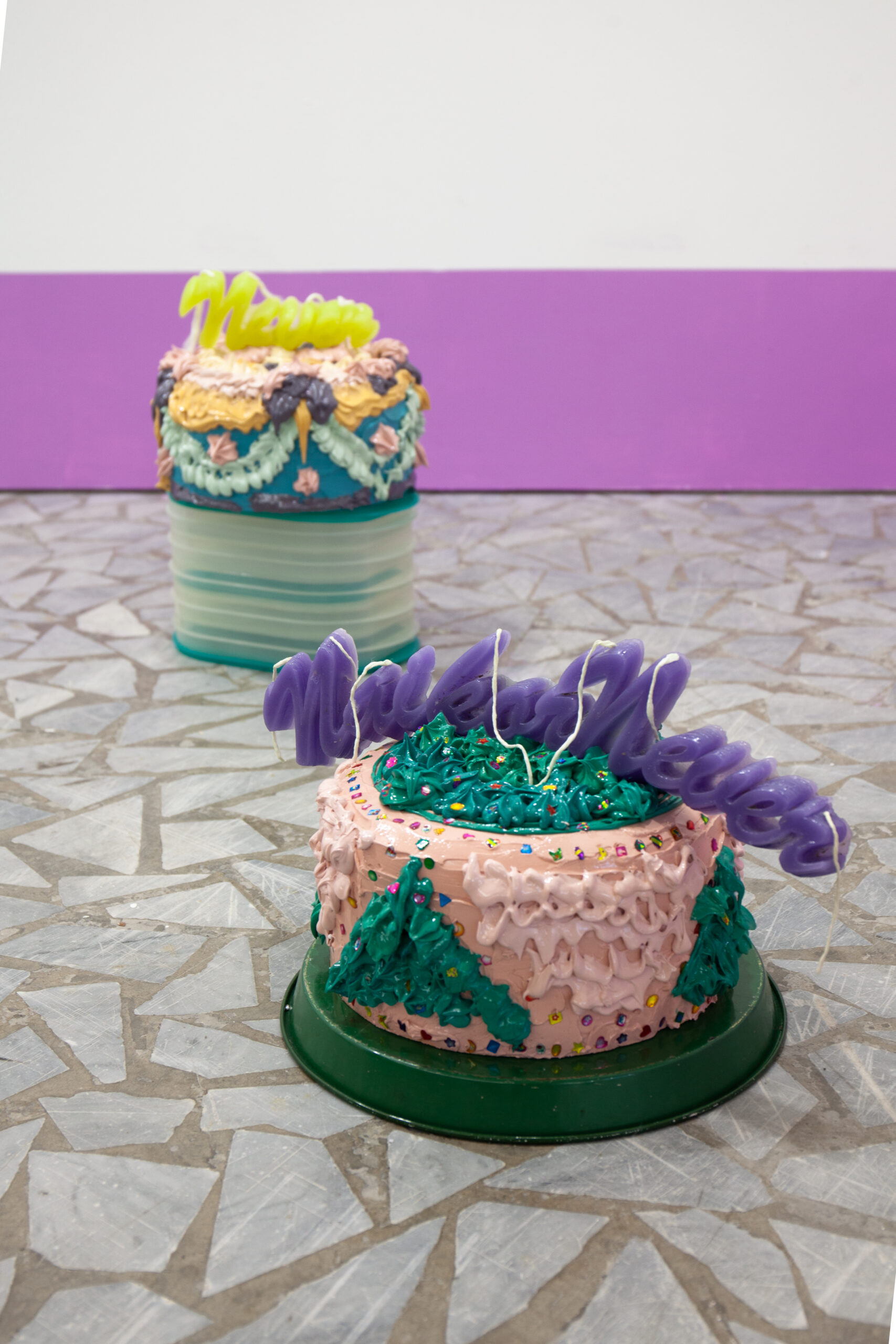
What I did not realize then is how the interpretation of the cakes is about one of Marisabel’s wishes, what she gives to the cake, but not necessarily what the cake asks of you. The cake is not a representation of Marisabel’s desire, neither is it a fragment of her (a self-portrait); the cake is. The cake is in itself a being, a living being that exists as well as a desire in front of us, and it asks us the question, “What do you desire, person who sees me and talks to me?” It’s an entity with very important parts: cake, candle, and Tupperware. The cake is made from Acrystal, a solvent-free acrylic polymer composed of an acrylic emulsion and a power made from mineral crystals. It’s used in the manufacture of prototypes, mock-ups, and replicas. In this case the cake resembles a non-edible, durable replica of a birthday cake, maybe used in the windows of bakeries in a parallel world. In Japan they’re known as “food models,” (食品サンプル), and as Yoko Hani explains, the producers behind these incredibly real pirated versions of food often work in a process very similar to that of a chef who prepares edible dishes. The cakes, even though they aren’t edible, are cakes not only in their visual quality but also in their manufacturing process. The cakes have a candle, which, as I explain in the text I quote above, are fragments or display the complete phrase “Naikornever.” Some of the fragments say “Naiko,” others “never,” and some “ever,” in this way playing with the diverse linguistic possibilities of this commercial slogan. These were made—just like the cake—through an artisanal process using wax. After many failed attempts, the candles are also a celebration of commercial excess, of the desire to possess and embody the aspirational values of a brand. However, it’s not the transnational Nike, but “Naik,” made up of the millions of micro-companies who support their businesses through the imitation of products from the Northern Hemisphere. The cakes are made to be seen and exhibited, which we know because of their plastic pedestals. While this element consists of a found object—plastic food containers—in relation to the cake, they speak to the universal function of the birthday cake, whose slices, after the party, are saved in these small containers. As an entity, each one refers to the moment when, as they sing to you for your birthday and you’re about to blow out the candles, they ask you to make a wish, which you don’t vocalize but which is secretly written on your mind before you proceed to blow out the flames.
It’s often difficult for me to quote western philosophy because I feel that I do not have enough knowledge about it to be able to present it in a clear and concise way, but I will make an exception in this case, because without quoting I feel that I steal ideas, even though the following perhaps only comes from my own interpretation of the case. In the fourth chapter (Self-Consciousness) of The Phenomenology of Spirit (1807), Hegel says the “opposition between its phenomenon and its truth has for its essence only truth, that is, the unity of consciousness with itself; this unity must be essential to self-consciousness; in other words, it is, in general, desire. Consciousness has now, as self-consciousness, a double object: one, the immediate object of sensible certainty and perception . . . ” While later interpretations of the text, such as that of Scott Jenkins, point out that this separation between desire and self is a strategy Hegel uses to “appeal to an awareness of one’s bodily desires in an account of the experience of finding oneself as a subject,” I want to take his statement literally, because I feel this is what happens with nike, neki, nekii, niikee, naik,naiik, naki. (i lov u but love issues). In desiring, the cakes think, see, and create their desires as a desiring entity, and we are confronted by the question: and what do you desire?
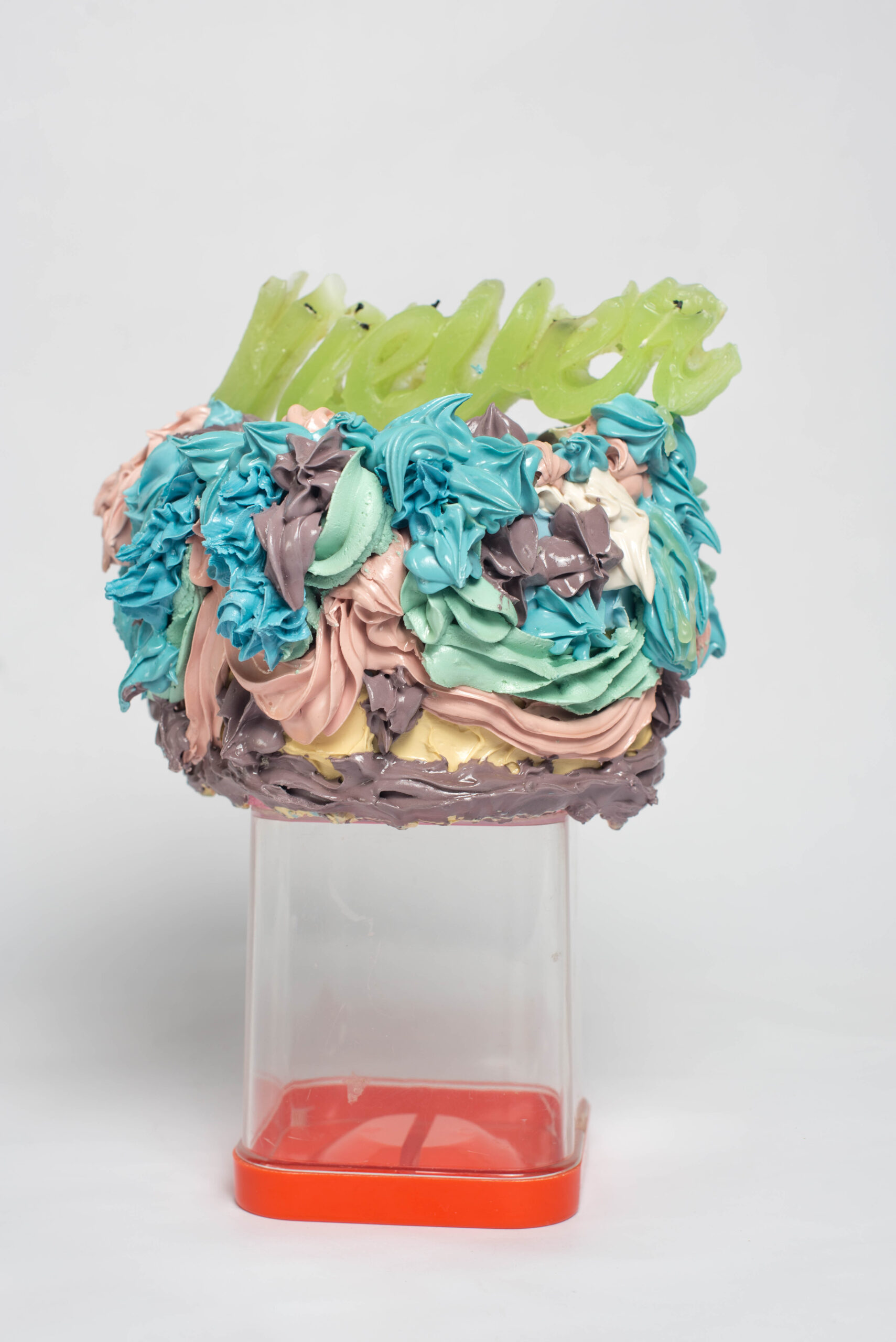
Days before my grandmother’s health deteriorated and she went to the hospital, she told me there is no love big enough to stop feeling the desire to return to the place where you were born and grew up. She told me attentively as she was being told that I would soon be leaving Lima, the place where I grew up. And here I find myself having learned something fundamentally important to me: Writing about desire, desires, and desirers always raises intense considerations about the whereabouts of our affections and how they assemble and disassemble the structure of desires behind every fragment of our being.
To write about desire means to turn these questions to ourselves, to think about where our desires come from, where they go, the cartographies they spin, and the directions they write.
For any trip, you need a playlist to accompany you along the way. In this case, this playlist will include the voices of Dominican singer Tokischa, Cuban singer Celia Cruz, Colombian singer Karol G, composer and writer Victoria Santa Cruz, and singer Marvin Gaye. Here you have the playlist, I hope you enjoy it while you write your new coordinates of your desirous body.
Link to playlist: https://open.spotify.com/playlist/3TUskJge2T2qZEc0kApdZD
Comments
There are no coments available.